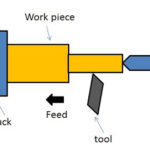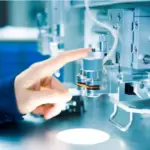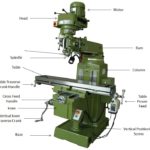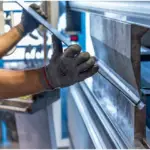Plastic molding parts breakage, especially at injection point, is a common problem manufacturers need to deal with from time to time. Even when you have prepared everything correctly, plastic molding parts breakage might still happen during your molding operation, and the injection point is the common area where the breakage usually occurs.
What are the Causes of Plastic Molding Parts Breakage at Injection Point?
There are quite a lot of potential problems that can cause the breakage of plastic molding parts at injection point. Here are some potential causes of plastic molding parts breakage at the injection point:
- Incorrect tonnage or clamping force application: First, you should take a look at the tonnage requirement of your machine and ensure that you have calculated the right clamping force for your plastic mold. Incorrect tonnage application can cause the plastic molding parts to break during the molding operation.
- Water nozzle problem: Another potential cause for the breakage is the water nozzle problem, which often leads you to fill an incorrect amount of water into the mold. Also, other water nozzle problems, such as leakage, can happen and damage your plastic molding parts if you are not careful.
- Incorrect injection pressure: The incorrect injection pressure can also cause the breakage in the plastic molding parts at the injection point. For instance, when you set the injection pressure too fast, you might end up filling the mold with too much material at the speed that is too high, making it difficult for the mold to handle the pressure, resulting in breakage.
- Material residue: The material residue from the previous molding cycle can also cause breakage in your plastic mold injection if you don’t clean the residue first before your next cycle. This residue will solidify and will make it more difficult for the mold to produce the parts according to your design requirements, and the plastic parts might break because of it.
- Incorrect temperature configuration: Temperature is also an important aspect that can contribute to the breakage, as the temperature that is too high can put the mold into more risks of breaking during the molding operation. Meanwhile, the temperature that is set too low can also contribute to breakage, as it can cause the early solidification of the materials, causing potential residue around the mold cavities.
- Problem with the direct gate: The direct gate that can’t withstand the high injection pressure can lead to damages around the mold and other parts. If the direct gate is too small and you put too much pressure on it, the area around the gate can also get damaged during the molding operation.
- Bad design with sharp corners. Although you can use a complex design for your plastic parts, some design types can also cause potential breakage in the plastic molding parts, such as the designs that contain sharp corners. The sharp corners can puncture the mold and cause some cracks around the area, which can eventually damage the mold.
- Bad environmental conditions. Some environmental conditions, such as the cold and humid environment, might actually cause the mold to become weaker in its structure, if you keep it that way for too long. Thus, bad environmental conditions can also contribute to breakage for the plastic molding parts at injection point.

Also Read:
- Types of Patterns in Casting Process
- What is Annealing Process and Why it is done?
- What is Quenching Process And Why it is Necessary?
How to Prevent Parts Breakage During Injection Molding
Your cost of injection molding will depend on how successful your production is. When you experience any plastic molding parts breakage during production, it can make your production cost much more expensive.
Here’s how to prevent plastic molding parts breakage during injection molding:
- Check all connections between the injection machine and the mold. First, it’s important for you to check all the connections between the mold and the injection molding machine, as one loose connection can cause bad problems during the molding operation. Make sure that everything is firmly connected to the machine, including the mold and the mold accessories.
- Check the firmness of the water nozzle. Water nozzles are a common cause of breakage for your plastic molding parts during the injection process. This is the reason you need to check the firmness of the water nozzle and make sure that it connects with the machine and the mold with a tight and firm connection.
- Follow the tonnage requirement for your plastic molding operation. Failing to follow the tonnage requirement will only increase the risks of damage to your plastic molding parts at injection point, which is bad for your production. Set the clamping force just right, not too weak and not too strong.
- Apply the right injection pressure. How much pressure do you need for your mold? Don’t put it too strong or too weak, as it can also cause damage to your plastic molding parts at the injection point. Calculate the injection pressure well before the molding operation to ensure the best result for your production.
- Simplify your parts design. Consider eliminating the sharp corners in your design, as it can cause potential breakage for the plastic molding parts. It’s ok to use sharp corners from time to time, but you have to consider the best practices to incorporate these sharp corners in your design.
- Set the correct temperature for your molding operation. For instance, high temperatures might cause the parts to reach its melting points too fast, whereas low temperatures might cause too much friction between the materials and the mold. Set the ideal temperatures for both the molding operations and the environment around your factory for the best production result.
Conclusion
It’s important to know the potential causes of plastic molding parts breakage and how to prevent it from happening in your molding operations. This is because even a small breakage can cost you a lot of money just to fix it, and it can also lower the value or quality of your production.
Best Manufacturing Solution
TEAM Rapid strives to provide the best manufacturing solutions for any industries, businesses, and brands, to help them complete their projects with any manufacturing options of their choice.









